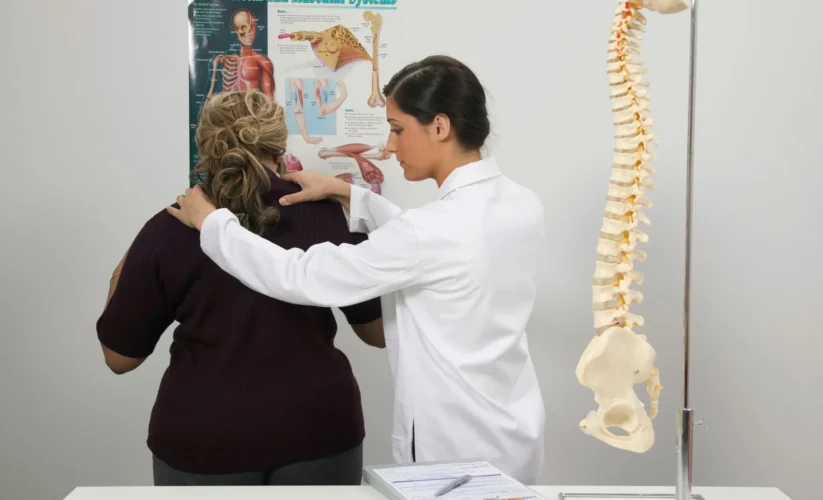
Understanding Turtle Neck Syndrome: Causes, Symptoms, and Treatment
In today’s digitally-driven world, where most of us spend a significant portion of our day hunched over electronic devices, a new health concern has emerged: Turtle Neck Syndrome. Also known as text neck or forward head posture, this condition is becoming increasingly common, especially among young adults and adolescents. But what is Turtle Neck Syndrome, and how does it affect our health? Let’s delve deeper into the causes and symptoms of this modern-day ailment and its treatment options.
What is Turtle Neck Syndrome?
Turtle Neck Syndrome refers to the strain and discomfort experienced in the neck and shoulders due to prolonged periods of leaning forward or looking down, typically while using electronic devices such as smartphones, tablets, and laptops. The term “turtle neck” aptly describes the characteristic posture associated with the condition – a forward head position resembling the posture of a turtle retracting its head into its shell.
Causes of Turtle Neck Syndrome
The primary cause of Turtle Neck Syndrome is the repetitive stress placed on the neck and upper back muscles, tendons, and ligaments due to poor posture. When we lean forward to look at our screens, the head’s weight increases, placing additional strain on the cervical spine. Over time, this strain can lead to muscle imbalances, joint dysfunction, and even structural changes in the spine, compromising overall health and well-being.
Additionally, prolonged use of electronic devices often involves holding the head downward for extended periods, further exacerbating the problem. what is turtle neck syndrome? Turtle Neck Syndrome refers to the strain and discomfort experienced in the neck and shoulders due to prolonged periods of leaning forward or looking down, typically while using electronic devices such as smartphones, tablets, and laptops. The rise of sedentary lifestyles and decreased physical activity also contributes to the development of Turtle Neck Syndrome, as weakened muscles are less able to support proper posture.
Symptoms of Turtle Neck Syndrome
Turtle neck syndrome can manifest in symptoms ranging from mild discomfort to severe pain. Some common symptoms include:
Neck pain: Individuals with turtle neck syndrome often experience pain and stiffness in the neck, especially at the base of the skull.
Shoulder pain: The strain on the neck muscles can also lead to pain and tension in the shoulders.
Headaches: Forward head posture can cause tension headaches, characterized by a dull, aching pain radiating from the base of the skull to the temples.
Reduced range of motion: Prolonged forward head posture can limit the range of motion in the neck, making it difficult to turn or tilt the head.
Tingling or numbness: In some cases, turtle neck syndrome can compress the nerves in the neck, leading to tingling or numbness in the arms and hands.
Treatment Options

Fortunately, turtle neck syndrome can be effectively treated with lifestyle changes, physical therapy, and ergonomic adjustments. Here are some treatment options:
Posture correction exercises: Physical therapy exercises aimed at strengthening the neck, shoulders, and upper back muscles can help improve posture and alleviate symptoms of turtle neck syndrome. These exercises may include chin tucks, neck stretches, and shoulder blade squeezes.
Ergonomic adjustments: Proper ergonomics is crucial for preventing and managing turtle neck syndrome. Individuals should ensure that their workspace is set up to promote good posture, including positioning the computer monitor at eye level, using an ergonomic chair with adequate lumbar support, and taking frequent breaks to stretch and rest the neck muscles.
Mindful device use: Practicing mindfulness when using electronic devices can help reduce the risk of turtle neck syndrome. Individuals should aim to hold their devices at eye level to minimize neck strain and take regular breaks to stretch and rest the neck muscles.
Pain management techniques: Over-the-counter pain relievers such as ibuprofen or acetaminophen can help alleviate the symptoms of turtle neck syndrome. Applying heat or ice packs to the affected area can temporarily relieve pain and inflammation.
Massage therapy: Massage therapy can be beneficial for relieving muscle tension and improving circulation in the neck and shoulders. A licensed massage therapist can target specific trigger points and tension areas to help alleviate turtle neck syndrome symptoms.
Stay Active: Regular physical activity is crucial to strengthening muscles, improving posture, and promoting overall health and well-being. But what is turtle neck syndrome? Turtle Neck Syndrome refers to the strain and discomfort experienced in the neck and shoulders due to prolonged periods of leaning forward or looking down, typically while using electronic devices such as smartphones, tablets, and laptops.
Strength and Flexibility Training: The primary cause of Turtle Neck Syndrome is the repetitive stress placed on the neck and upper back muscles, tendons, and ligaments due to poor posture. What is Turtle Neck Syndrome? It refers to the strain and discomfort experienced in the neck and shoulders due to prolonged periods of leaning forward or looking down, typically while using electronic devices such as smartphones, tablets, and laptops.
Conclusion:
Turtle Neck Syndrome is a common condition that affects individuals who spend long hours using electronic devices. But what is turtle neck syndrome? This syndrome refers to the strain and discomfort experienced in the neck and shoulders due to prolonged periods of leaning forward or looking down, typically while using smartphones, tablets, or laptops. The term “turtle neck” aptly describes the characteristic posture associated with the condition – a forward head position resembling the posture of a turtle retracting its head into its shell.





